AML Compliance Guidelines: Canada
Simplifying the complexities of AML/CFT compliance
AML Regulations in Canada
The major regulatory bodies for AML regulations are:
The Financial Transactions and Reports Analysis Centre of Canada (FINTRAC):
FINTRAC is Canada’s financial intelligence unit. Its primary role is to detect, prevent, and deter money laundering and the financing of terrorist activities by collecting, analyzing, and disclosing financial information and intelligence.
The Proceeds of Crime (Money Laundering) and Terrorist Financing Act (PCMLTFA)
Establishing A Compliance Program (s. 9.6 of PCMLTFA)
Entities must have a compliance program in place. This includes:
- Appointing a compliance officer responsible for implementing the program.
- Developing and applying written policies and procedures to assess and document associated risks.
- Providing ongoing training for employees and agents.
- Regularly reviewing and updating the compliance program.
Client Identification (s. 54-64 of PCMLTFR)
Entities must:
- Verify the identity of individuals or entities before establishing a business relationship or conducting certain transactions.
- Use specific methods, such as government-issued photo ID or credit file checks, to verify identities.
- Keep records of the methods used to verify identity.
Record Keeping (s. 6 of PCMLTFA and s. 23-52 of PCMLTFR)
Entities are required to keep records of:
- Client information and identity verification.
- Certain types of transactions, like large cash transactions, electronic funds transfers, and casino disbursements.
- Business correspondence.
- The efforts and measures taken to obtain certain missing client information.
Reporting (s. 7-9 of PCMLTFA)
Entities have to report:
- Suspicious transactions (s. 7 of PCMLTFA): Transactions that raise suspicions of being related to money laundering or terrorist financing.
- Large cash transactions (s. 7 of PCMLTFA): Transactions involving $10,000 or more in cash, either in a single transaction or in multiple related transactions within 24 hours.
- Electronic funds transfers (s. 9 of PCMLTFA): International electronic transfers of $10,000 or more, either sent or received.
- Terrorist property (s. 8 of PCMLTFA): If an entity believes it is in possession or control of property owned or controlled by or on behalf of a terrorist or terrorist group.
Politically Exposed Persons (PEPs) and Heads of International Organizations (s. 54.1-54.4 of PCMLTFR)
Entities are required to:
- Take reasonable measures to determine if a client is a domestic or foreign politically exposed person or a head of an international organization.
- Obtain senior management approval before establishing or continuing a business relationship with such persons.
- Make efforts to establish the source of wealth of the said persons.
Ongoing Monitoring (s. 54.5-54.6 of PCMLTFR)
Entities must:
- Regularly review and update client information.
- Conduct ongoing monitoring to detect transactions that must be reported as suspicious.
Third-Party Determination (s. 9.3 of PCMLTFA and s. 52 of PCMLTFR)
- When conducting certain activities or transactions, entities must determine if the client is acting on behalf of a third party and obtain specific third-party information.
Correspondent Banking (s. 9.4-9.5 of PCMLTFA)
- Financial entities are prohibited from having a correspondent banking relationship with a shell bank and must take specific measures when entering into and during a correspondent banking relationship.
Voluntary Information (s. 10.1 of PCMLTFA)
- Allows for voluntary information on money laundering and terrorist financing activities to be reported to FINTRAC by any person or entity.
Enhanced Due Diligence (s. 9.6(3) of PCMLTFA)
- For high-risk clients and scenarios, entities are required to take enhanced measures to verify identity, understand the purpose and intended nature of the business relationship, and conduct ongoing monitoring.
Definition of a PEP: (Sections 9.3(3) to 9.3(7) of PCMLTFR)
- Foreign PEP: An individual who holds or has ever held one of several specified positions in or on behalf of a foreign country, such as a head of state, member of the executive council of government, member of a legislature, deputy minister, ambassador, etc.
- Domestic PEP: An individual who holds — or has held within the last five years — a specific office or position in or on behalf of the Canadian federal government, a provincial government, or a municipal government.
- Head of an international organization (HIO): An individual who is either the head of an international organization established by the governments of states or the head of an institution of any such organization.
- Family members of a PEP or HIO: The act also considers immediate family members of PEPs or HIOs, and persons known to be closely associated with a PEP or HIO, to be PEPs themselves.
Determination of PEP status: (Sections 9.3(1) and 9.3(2) of PCMLTFR)
- Entities covered by the PCMLTFA are required to take measures to determine whether an account holder (or beneficial owner) is a PEP, a family member of a PEP, or a person closely associated with a PEP or HIO.
- The assessment must occur at account opening and periodically throughout the relationship.
Risk assessment for PEPs: (Section 9.6 of PCMLTFR)
- Once an individual is determined to be a PEP, HIO, or closely associated individual, the reporting entity must assess the potential risk of a money laundering or terrorist financing offense.
Requirement for senior management sign-off: (Section 9.4 of PCMLTFR)
- When a PEP or HIO is identified, and the relationship or transaction poses a high risk, a reporting entity must take additional measures. This includes obtaining senior management approval to keep the business relationship.
Source of funds inquiry: (Section 9.5 of PCMLTFR)
- For high-risk relationships or transactions with a PEP, HIO, or closely associated individual, entities must take reasonable measures to ascertain the source of the funds or wealth of the PEP or HIO.
Record-keeping (Section 9.9 of PCMLTFR)
- Reporting entities are required to keep records of measures taken and information obtained concerning PEPs, HIOs, and closely associated individuals.
- These records help in demonstrating compliance and can be crucial during audits or regulatory reviews.
Ongoing monitoring (Section 6.1(b) of PCMLTFR)
- Reporting entities are obligated to regularly review and update the information related to PEPs, especially in high-risk scenarios. This is to ensure that their profile, risk assessment, and activities are consistent with what the entity knows about them.
High-Risk Clients: (Section 71.1 of PCMLTFR)
- For business relationships deemed to be high risk, EDD measures must be applied. This includes gathering more information, closer monitoring, and more frequent updates.
Correspondent Banking: (Section 9.4 of PCMLTFR)
- For correspondent banking relationships, there is a requirement to gather and verify information on the respondent bank and its owners, ensure it is regulated and supervised, and get approval from senior management.
Third-party Determination: (Sections 8(1) and 9.1 of PCMLTFR)
- If a transaction is conducted by a third party, entities must determine who that third party is and if they’re acting on behalf of any other individual or entity.
Enhanced Measures for High-Risk Countries: (Section 71.1(3) of PCMLTFR)
- If a business relationship or transaction involves a country deemed high risk (especially one with weak anti-money laundering or anti-terrorist financing measures), entities must apply enhanced due diligence.
Verification of Beneficial Ownership: Reference: (Sections 11.1 of PCMLTFR)
- Reporting entities need to identify the beneficial owners of entities with whom they have business relationships.
- The beneficial owner is defined as an individual who owns or controls 25% or more of an entity.
Terrorist Property Reporting: (Section 83.1of PCMLTFA)
- Report the possession or control of property that is believed to belong to a listed terrorist entity or individual.
- Entities must also freeze and refrain from making available any property in their possession or control that they believe is owned or controlled by or on behalf of a listed terrorist entity.
Suspicious Transaction Reporting: (Sections 7 to 9 of PCMLTFA)
- If an entity suspects that a transaction or attempted transaction is related to a money laundering or terrorist activity financing offense, they are obligated to report it.
Obligation for Ongoing Monitoring: (Section 6.1 of PCMLTFR)
- Reporting entities are required to monitor their business relationships on an ongoing basis. This is to ensure that all transactions carried out within the context of the relationship are consistent with the information the reporting entity has obtained about its client.
Purpose of Ongoing Monitoring: (PCMLTFR, Section 6.1(a-b))
- Ongoing monitoring helps in detecting suspicious transactions that must be reported to the Financial Transactions and Reports Analysis Centre of Canada (FINTRAC).
- It also helps in keeping client identification data up-to-date and reassessing the risk associated with a client’s transactions and activities.
Risk Assessment: (PCMLTFR, Section 1(2))
- Reporting entities are expected to conduct risk assessments of their clients and business relationships. This risk assessment should be periodically updated based on ongoing monitoring data.
- A risk assessment determines factors like the frequency of ongoing monitoring, the level of due diligence required, and whether enhanced measures are needed for certain clients or transactions.
Business Relationship Definition: (PCMLTFR, Section 1(2))
- The concept of ongoing monitoring is inherently tied to the idea of a “business relationship.” Under PCMLTFA, a business relationship is formed after the entity has had to ascertain the identity of the client at least twice in the context of different transactions (unless otherwise indicated).
Change in Risk: (PCMLTFR, Section 6.1(c))
- If, while monitoring a business relationship, a reporting entity detects a fact that would modify the risk level of a client (e.g., a low-risk client becomes high-risk), they must take measures to reflect this change.
- This might involve applying enhanced due diligence measures for high-risk clients or conducting more frequent reviews of transaction activities.
Records of Monitoring: (PCMLTFA, Section 23; PCMLTFR, Section 6(1))
- Reporting entities are required to maintain records of their monitoring activities. This ensures that they can demonstrate their compliance with the PCMLTFA and provide evidence of their monitoring practices if required by regulators.
United Nations Act
Regulations Implementing United Nations Resolutions on the Democratic Republic of the Congo (SOR/2004-222)
Asset Freeze:
- Freezing the assets of persons engaged in or providing support for acts that violate international law concerning armed conflict in Congo.
Section 2: Definition of “designated person”.
Section 3: Prohibition on dealing with the assets of designated persons.Regulations
Implementing United Nations Resolutions on Iran (SOR/2007-44)
Asset Freeze:
- Asset freezes against individuals and entities involved in Iran’s nuclear program.
Financial Restrictions:
- Restrictions on financial transactions and services related to Iran’s nuclear activities.
Regulations Implementing United Nations Resolutions on Libya (SOR/2011-51)
Asset Freeze:
- Freezing assets and economic resources of designated individuals and entities.
Regulations Implementing United Nations Resolutions on North Korea (SOR/2006-287)
Asset Freeze:
- Imposing asset freezes on designated individuals and entities connected with North Korea’s nuclear program.
Financial Restrictions:
- Limiting financial transactions with North Korean entities.
Regulations Implementing United Nations Resolutions on South Sudan (SOR/2015-165)
Asset Freeze:
- Asset freezes against persons undermining the peace, stability, and security of South Sudan.
Special Economic Measures Act (SEMA)
Authority to Make Orders and Regulations: (SEMA, Section 4)
- The Governor in Council can, under SEMA, make orders or regulations when it’s believed that a grave breach of international peace and security has occurred.
Prohibitions: (SEMA, Section 4)
The types of sanctions that can be imposed under SEMA vary and may include:
- Freezing assets of designated persons.
- Prohibiting persons in Canada and Canadians outside of Canada from engaging in any activity related to any property of a designated person or providing financial or related services to or for the benefit of a designated person.
- Restricting or prohibiting trade or financial transactions with a foreign state.
- Prohibiting the docking in Canada of ships or the landing in Canada of aircraft from a sanctioned country.
Listed Persons:
- Specific individuals and entities can be designated (i.e., listed) under SEMA regulations. Financial institutions and businesses should regularly consult these lists to ensure that they are not inadvertently doing business with these designated persons, thereby violating Canadian sanctions.
Duty to Freeze Property:
- Financial institutions, among other entities, have an obligation to determine on a continual basis whether they are in possession or control of property owned or controlled by or on behalf of a sanctioned individual or entity.
Reporting Obligations:
- Entities, including financial institutions, are mandated to disclose without delay to the Royal Canadian Mounted Police (RCMP) and the Canadian Security Intelligence Service (CSIS):
- Any property in their possession or control that they believe is owned or controlled by a sanctioned person or entity.
- Details of a proposed or actual transaction concerning such property.
References
- Proceeds of Crime (Money Laundering) and Terrorist Financing Act
- Regulations Implementing the United Nations Resolutions on Iran (SOR/2007-44)
- Regulations Implementing the United Nations Resolutions on the Democratic Republic of the Congo
- Regulations Implementing the United Nations Resolutions and Imposing Special Economic Measures on Libya
- Regulations Implementing the United Nations Resolutions on the Democratic People’s Republic of Korea (DPRK)
- Regulations Implementing the United Nations Resolutions on South Sudan
- Special Economic Measures Act
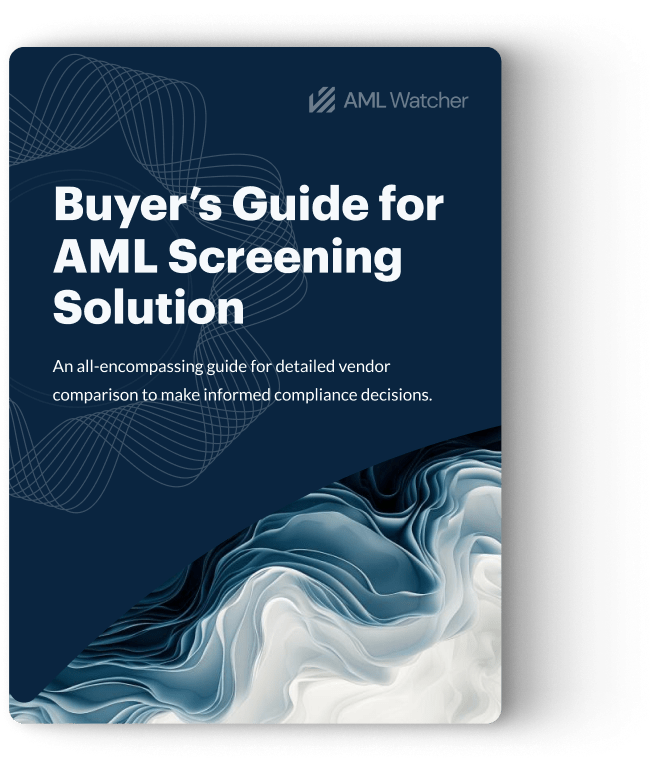
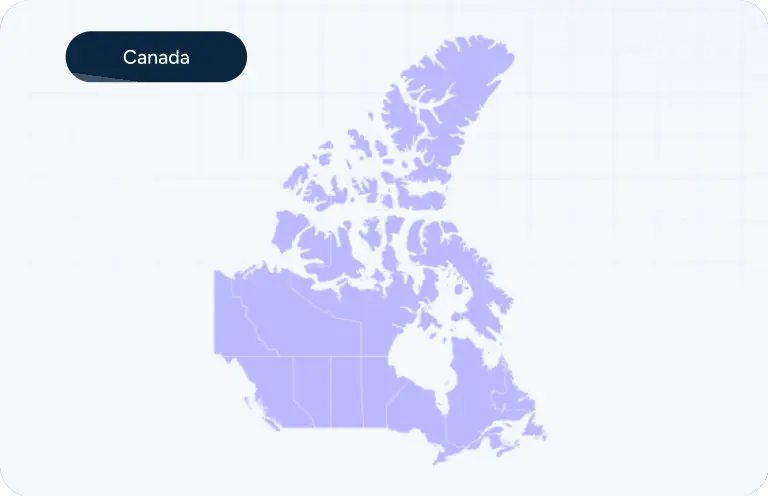 Compliance Guidelines: Canada
Compliance Guidelines: Canada
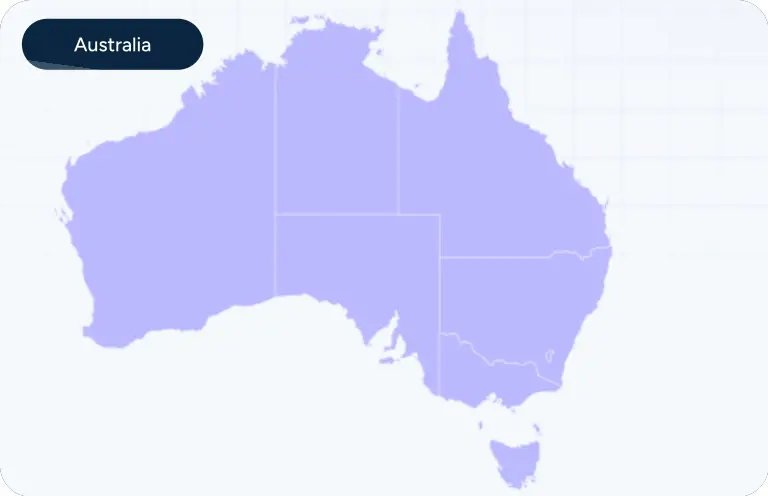 Compliance Guidelines: Australia
Compliance Guidelines: Australia
 Australia’s AML/CFT Law Tranche2 Expanding Compliance Requirement
Australia’s AML/CFT Law Tranche2 Expanding Compliance Requirement
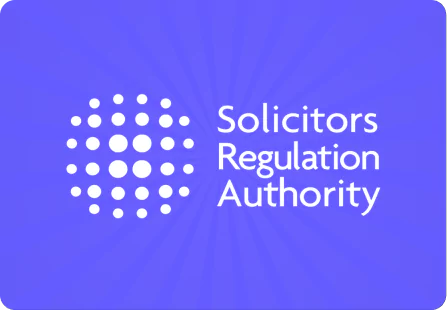 SRA Announces New AML Regulations for Legal Professionals
SRA Announces New AML Regulations for Legal Professionals

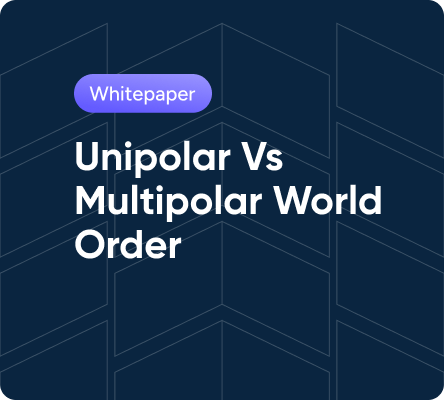
 Why Should states conduct AML Due Diligence for CBI/RBI Investment Schemes?
Why Should states conduct AML Due Diligence for CBI/RBI Investment Schemes?
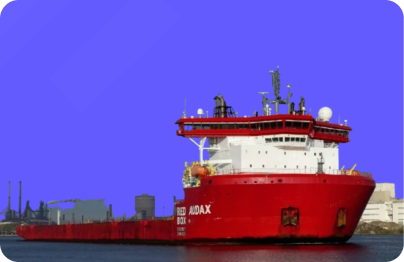 How can businesses comply with US sanctions on vessels?
How can businesses comply with US sanctions on vessels?
 Current Use Cases of AI Technology in the AML Compliance
Current Use Cases of AI Technology in the AML Compliance
 How Cyber Security Threats impact AML and Fraud?
How Cyber Security Threats impact AML and Fraud?
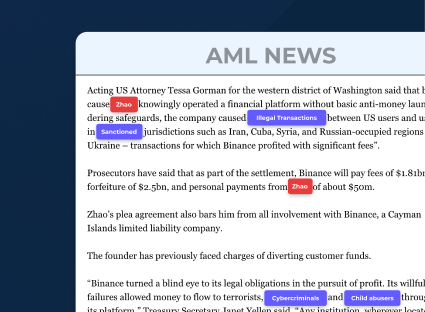 5 Keyword Search Challenges in Negative News Screening
5 Keyword Search Challenges in Negative News Screening
 6 Best Practices For Efficient PEP Screening
6 Best Practices For Efficient PEP Screening
